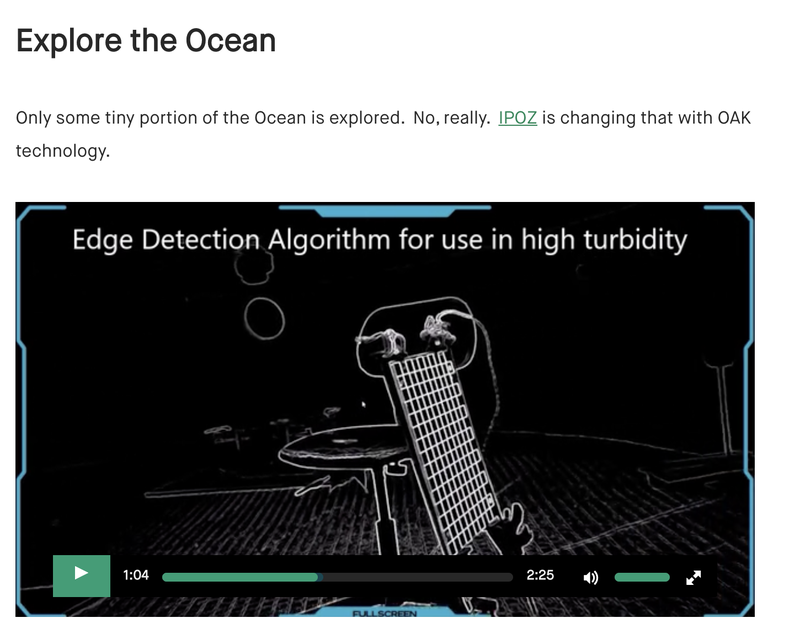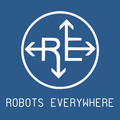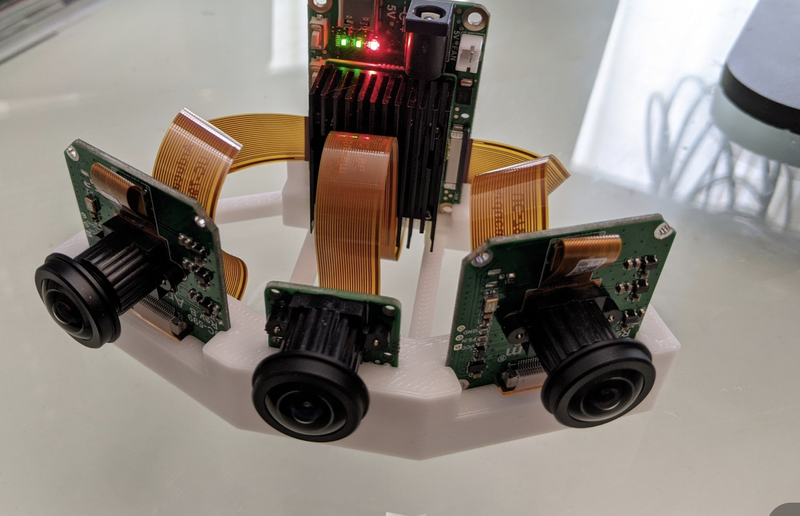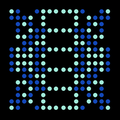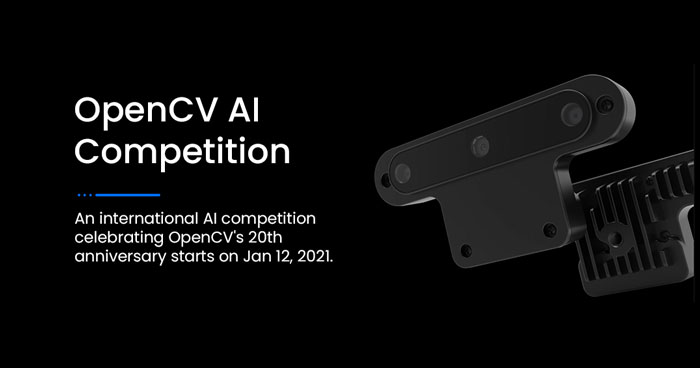-
Hack Chat Transcript, Part 2
12/01/2021 at 21:03 • 0 commentsJust like a trained safety personnel can look out for.
![]() to tag on to Dan's question, are there use cases being discussed/debated that are non-human task/automation centered? I don't have examples or inkling what other cases can be used for SpatialAI
to tag on to Dan's question, are there use cases being discussed/debated that are non-human task/automation centered? I don't have examples or inkling what other cases can be used for SpatialAI![]()
![]() So maybe an advanced security system that, instead of sensing doors or windows open and close with switches, watch for, say, someone climbing into a window.
So maybe an advanced security system that, instead of sensing doors or windows open and close with switches, watch for, say, someone climbing into a window.![]() For example, fall detection and can be privacy-preserving.
For example, fall detection and can be privacy-preserving.![]() Yes, good example Dan.
Yes, good example Dan.![]() @Erik - can you find the machine safety demo and share it here too?
@Erik - can you find the machine safety demo and share it here too?![]() or to detect when someone is too close to an operative robot. Spatial AI can detect where robot hand is, and where person is, and measure distance between them, demo here: https://github.com/luxonis/depthai-experiments/tree/master/gen2-human-machine-safety#gen2-human-machine-safety
or to detect when someone is too close to an operative robot. Spatial AI can detect where robot hand is, and where person is, and measure distance between them, demo here: https://github.com/luxonis/depthai-experiments/tree/master/gen2-human-machine-safety#gen2-human-machine-safety![]() Thanks!
Thanks!![]() @ump - yes. There are all sorts of applications which are not about replacing humans.
@ump - yes. There are all sorts of applications which are not about replacing humans.![]() And many of the problems are just unsolved problems, which were thought unsolvable.
And many of the problems are just unsolved problems, which were thought unsolvable.![]() One good example is having OAK-based sensors on fishing nets.
One good example is having OAK-based sensors on fishing nets.![]() Or produce Gcode on the fly for robotic arms
Or produce Gcode on the fly for robotic arms![]() To make a smart fishing net.
To make a smart fishing net.![]() To prevent bycatch. Which is just unsolved now.
To prevent bycatch. Which is just unsolved now.![]() The only way bycatch is discovered is by bringing up the net - and discovering (with horror) all the dead endangered species that are in it.
The only way bycatch is discovered is by bringing up the net - and discovering (with horror) all the dead endangered species that are in it.![]() Is that catching unintended species?
Is that catching unintended species?![]() Yes.
Yes.![]() With Spatial AI, you can get the species, size, and locations of all of them. Underwater and communciated like a 56k modem back to the ship (through sound transduction).
With Spatial AI, you can get the species, size, and locations of all of them. Underwater and communciated like a 56k modem back to the ship (through sound transduction).![]() So you can just pull the nets or move them when species that are too small (common problem) or are endangered (or both) are present.
So you can just pull the nets or move them when species that are too small (common problem) or are endangered (or both) are present.![]() I am working on "spinal cord injury" currently. You need rigged 3D models of the person for exoskeletons. You need 3D imaging real time of nerve activity. You need 3D monitoring of muscles. If you use the existing muscles by stimulation you need the models of the target area, the fields used, and careful planning to keep a unique human balanced. It is almost all 3D.
I am working on "spinal cord injury" currently. You need rigged 3D models of the person for exoskeletons. You need 3D imaging real time of nerve activity. You need 3D monitoring of muscles. If you use the existing muscles by stimulation you need the models of the target area, the fields used, and careful planning to keep a unique human balanced. It is almost all 3D.![]() Cool applications! Thanks Brandon
Cool applications! Thanks Brandon![]() There have to be significant problems with turbidity and general poor-visibility conditions underwater in most places. At least I'd imagine so
There have to be significant problems with turbidity and general poor-visibility conditions underwater in most places. At least I'd imagine so![]() Thanks! A bunch more applications are in the materials below as well @ump :
Thanks! A bunch more applications are in the materials below as well @ump :https://opencv.org/opencv-ai-competition-2021/
https://www.kickstarter.com/projects/opencv/opencv-ai-kit-oak-depth-camera-4k-cv-edge-object-detection/description
Great questions!
![]() thought. megahertz-range ultrasound transducer array. augment the vision with 3d sonar.
thought. megahertz-range ultrasound transducer array. augment the vision with 3d sonar.![]() @Dan Maloney - yes, the built-in edge filter helps with tubidity.
@Dan Maloney - yes, the built-in edge filter helps with tubidity.![]()
![]()
![]() Here is IPOZ using it in high turbidity on OAK-FFC-3P.
Here is IPOZ using it in high turbidity on OAK-FFC-3P.![]() And @RichardCollins that's super cool. 100% agree.
And @RichardCollins that's super cool. 100% agree.![]() @RichardCollins our community has created a few great projects that use our devices for 3D pose estimation, eg this one: https://github.com/geaxgx/depthai_blazepose#inferred-3d-vs-measured-3d
@RichardCollins our community has created a few great projects that use our devices for 3D pose estimation, eg this one: https://github.com/geaxgx/depthai_blazepose#inferred-3d-vs-measured-3d![]() @Thomas Shaddack yes love that idea. IPOZ is doing similar with Sonar underwater and fusing them.
@Thomas Shaddack yes love that idea. IPOZ is doing similar with Sonar underwater and fusing them.![]() Search "IPOZ" on here:
Search "IPOZ" on here:![]()
OpenCV AI Kit - Lite (and Tiny)
Spatial AI Made Easy, Tiny and Affordable - From the Biggest Name in Computer Vision 7,988 backers pledged $1,028,843 to help bring this project to life. You'll need an HTML5 capable browser to see this content. OpenCV AI Kit - Lite (and Tiny)
![]() We need to get that video uploaded to Youtube separately... for now I think that's the only place it is on the internet.
We need to get that video uploaded to Youtube separately... for now I think that's the only place it is on the internet.![]() Ah, cool. I'd imagine other wavelengths of light might help too.
Ah, cool. I'd imagine other wavelengths of light might help too.![]() Yes. IIRC 400nm is best wavelength.
Yes. IIRC 400nm is best wavelength.![]() And we have cameras that work there.
And we have cameras that work there.![]() What about extending it to panorama-like arrays? overlapping fields of vision, and we could get 360-degree spatial awareness around the vehicle.
What about extending it to panorama-like arrays? overlapping fields of vision, and we could get 360-degree spatial awareness around the vehicle.![]() 400nm best for underwater IIRC. There is dip in absorption there.
400nm best for underwater IIRC. There is dip in absorption there.![]() Oh thanks Erik~
Oh thanks Erik~![]() If you're looking for underwater rangefinders, we actually have some stuff in the pipeline, feel free to reach out to myself or Matteo. You're in the right ballpark for laser.
If you're looking for underwater rangefinders, we actually have some stuff in the pipeline, feel free to reach out to myself or Matteo. You're in the right ballpark for laser.![]() What's the difference between the Oak-D and Oak-D-Lite?
What's the difference between the Oak-D and Oak-D-Lite?![]() @Thomas Shaddack - yes, we have several customers who are doing panorama overlap. Project NorthStar is one and open source for XR/AR.
@Thomas Shaddack - yes, we have several customers who are doing panorama overlap. Project NorthStar is one and open source for XR/AR.![]() @Ethan Waldo here we explain it in details: https://docs.luxonis.com/projects/hardware/en/latest/pages/DM9095.html#oak-d-vs-oak-d-lite
@Ethan Waldo here we explain it in details: https://docs.luxonis.com/projects/hardware/en/latest/pages/DM9095.html#oak-d-vs-oak-d-lite![]() thanks
thanks![]() Using OAK-FFC-4P
Using OAK-FFC-4P![]()
![]()
![]() random thought for cameras. use reflective optics instead of lenses. then we don't rely on the air-water refraction index difference, and can flood the entire assembly with optical silicone oil/gel. voila, no crushable hollow spaces, and no pressure hull needed. electronics (without hollow components like crystal cans...) can withstand immense hydrostatic pressures. trick used for stuff outside of the inner pressure hull of submarines.
random thought for cameras. use reflective optics instead of lenses. then we don't rely on the air-water refraction index difference, and can flood the entire assembly with optical silicone oil/gel. voila, no crushable hollow spaces, and no pressure hull needed. electronics (without hollow components like crystal cans...) can withstand immense hydrostatic pressures. trick used for stuff outside of the inner pressure hull of submarines.![]() Thanks Eric and Brandon. Besides spinal cord injury there are millions needed assistance because of various kinds of paralysis. For the Internet Foundation I map global groups and then try to put the pieces together. ("spinal cord" "injury") OR "paralysis") has 40.8 Million entry points. I found that having a technology is pretty much useless, unless you map the people working on it, who needs it, and all the subsidiary groups and people affected. So I am listening to you talking as see all the groups trying to work on the same technologies. Hackaday.IO could be an incubator and work with all other similar and related efforts on the Internet. Sorry to interupt. I am reading what you are talking about and trying to note where it can be used. Imagine keeping market studies for every idea in the world, along with competitive and business intelligence reports.
Thanks Eric and Brandon. Besides spinal cord injury there are millions needed assistance because of various kinds of paralysis. For the Internet Foundation I map global groups and then try to put the pieces together. ("spinal cord" "injury") OR "paralysis") has 40.8 Million entry points. I found that having a technology is pretty much useless, unless you map the people working on it, who needs it, and all the subsidiary groups and people affected. So I am listening to you talking as see all the groups trying to work on the same technologies. Hackaday.IO could be an incubator and work with all other similar and related efforts on the Internet. Sorry to interupt. I am reading what you are talking about and trying to note where it can be used. Imagine keeping market studies for every idea in the world, along with competitive and business intelligence reports.![]() @Thomas Shaddack I believe IPOZ are using really thin quartz glass in front of the cameras and have cameras flush to the surface of the glass (to minimize refraction)
@Thomas Shaddack I believe IPOZ are using really thin quartz glass in front of the cameras and have cameras flush to the surface of the glass (to minimize refraction)![]() you can get lensless cameras, that use a fancy pattern rather than say pinhole/zoneplate, i can't seem to find them at the moment though
you can get lensless cameras, that use a fancy pattern rather than say pinhole/zoneplate, i can't seem to find them at the moment though![]() @RichardCollins in a sense it already is, bringing the opensource community together:)
@RichardCollins in a sense it already is, bringing the opensource community together:)![]() @anfractuosity how would stereo disparity work in at such camera?
@anfractuosity how would stereo disparity work in at such camera?![]()
https://www.youtube.com/watch?v=XS1FtWqXWQk
![]() This might be of interest too @RichardCollins .
This might be of interest too @RichardCollins .![]() And agreed great idea!
And agreed great idea!![]() We're about an hour in now, which is where we usually like to give the host(s) a chance to bail and get back to work. So I'll say my official thank you to Erik and Brandon for stopping by today, and to everyone for the interesting discussion. Food for thought for me -- I can think of a couple of different applications for spatial AI that I'd like to try.
We're about an hour in now, which is where we usually like to give the host(s) a chance to bail and get back to work. So I'll say my official thank you to Erik and Brandon for stopping by today, and to everyone for the interesting discussion. Food for thought for me -- I can think of a couple of different applications for spatial AI that I'd like to try.![]() @Erik just found the paper https://arxiv.org/abs/1509.00116 i'm not sure afraid
@Erik just found the paper https://arxiv.org/abs/1509.00116 i'm not sure afraid![]() Thanks for coming. I got a pretty good perspective on other people's hardware, and that's always good to have!
Thanks for coming. I got a pretty good perspective on other people's hardware, and that's always good to have!![]() Erik, "open source" OR "opensource" is 201 Million entry points. It is NOT an integrated whole on the Internet and in the real world. I know the reasons why and can bypass and map from the outside. But getting groups so they actually collaborate to create real results for real people and needs, is a lot different than a bunch of people just talking about the same thing. Thanks for the links.
Erik, "open source" OR "opensource" is 201 Million entry points. It is NOT an integrated whole on the Internet and in the real world. I know the reasons why and can bypass and map from the outside. But getting groups so they actually collaborate to create real results for real people and needs, is a lot different than a bunch of people just talking about the same thing. Thanks for the links.![]() Thank you all!
Thank you all!![]() Thanks for the great ideas and methods!
Thanks for the great ideas and methods!![]() Thanks everyone. I'll post a transcript in a few minutes, in case you missed any links.
Thanks everyone. I'll post a transcript in a few minutes, in case you missed any links. -
Hack Chat Transcript, Part 1
12/01/2021 at 21:02 • 0 comments![]() Greetings all, welcome to the penultimate Hack Chat of 2021! I'm Dan, and as usual I'll be modding today along with Dusan as we welcome Erik Kokalj to the chat. Erik works on spatial AI at Luxonis, and we're going to go into depth about spatial AI and CV.
Greetings all, welcome to the penultimate Hack Chat of 2021! I'm Dan, and as usual I'll be modding today along with Dusan as we welcome Erik Kokalj to the chat. Erik works on spatial AI at Luxonis, and we're going to go into depth about spatial AI and CV.![]() Sorry, I had to...
Sorry, I had to...Erik, are you out there yet?
![]() Hello and welcome!
Hello and welcome!![]() yay!
yay!![]() Hello everyone!
Hello everyone!![]() hi
hi![]() Hey, welcome, great to have you today. Can you tell us a little about yourself, and maybe how you came to be working in machine vision?
Hey, welcome, great to have you today. Can you tell us a little about yourself, and maybe how you came to be working in machine vision?![]() Sure, so I am a software engineer with an electrical engineering background. I come from Slovenia, Europe and I am opensource enthusiast
Sure, so I am a software engineer with an electrical engineering background. I come from Slovenia, Europe and I am opensource enthusiast![]() I started wokring at Luxonis about a year ago, prior to that I didn't have much machine vision experience, and at Luxonis I started working on examples, tutorials, technical documentation, technical support etc.
I started wokring at Luxonis about a year ago, prior to that I didn't have much machine vision experience, and at Luxonis I started working on examples, tutorials, technical documentation, technical support etc.![]() So I learned most of it over time doing demos/experiments
So I learned most of it over time doing demos/experiments![]() Sounds like the perfect way to learn, at least for me -- sink or swim, kinda.
Sounds like the perfect way to learn, at least for me -- sink or swim, kinda.![]() So I've got a starter question: when you say "spatial AI", is that really just what a Kinect or some similar depth sensor does? Or is there more to it than that?
So I've got a starter question: when you say "spatial AI", is that really just what a Kinect or some similar depth sensor does? Or is there more to it than that?![]() yes, exactly:) A lot of "hard" technical stuff is also abstracted by our library, so me, working on demos, didn't need that much machine vision experience
yes, exactly:) A lot of "hard" technical stuff is also abstracted by our library, so me, working on demos, didn't need that much machine vision experience![]() yes, it's very similar to Kinect. So TL;DR it's combining depth perception + AI, which can be used extensively across many fields
yes, it's very similar to Kinect. So TL;DR it's combining depth perception + AI, which can be used extensively across many fields![]() just copying some use-cases:
just copying some use-cases:- Visual assistance (for visually impaired, or for aiding in fork-lift operation, etc.)
- Aerial / subsea drones (fault detection, AI-based guidance/detection/routing)
- E-scooter & micromobility (not allowing folks to ride rented e-scooters like jerks)
- Cargo/transport/autonomy (fullness, status, navigation, hazard avoidance)
- Sports monitoring (automatically losslessly zooming in on action)
- Smart agriculture (e.g guiding lasers to kill weeds, pests, or targeting watering)
![]() I'm very interested in what the state of the art hardware-wise is on the open source side there.
I'm very interested in what the state of the art hardware-wise is on the open source side there.![]() I guess that's where my confusion comes from, really -- there seems like so much you can do with "plain old CV" that doesn't need depth detection. But then again, depth really opens up some interesting doors. Add in the AI component, and it seems really powerful.
I guess that's where my confusion comes from, really -- there seems like so much you can do with "plain old CV" that doesn't need depth detection. But then again, depth really opens up some interesting doors. Add in the AI component, and it seems really powerful.![]() @riley.august most of our baseboards are opensource, at least all where Myriad X (VPU by Intel) isn't on
@riley.august most of our baseboards are opensource, at least all where Myriad X (VPU by Intel) isn't on![]() Ooh. I'll have a look, it's nice to see other companies contributing back to the maker community like that. Depth detection does take a lot of the guesswork out of interpreting a 2D image.
Ooh. I'll have a look, it's nice to see other companies contributing back to the maker community like that. Depth detection does take a lot of the guesswork out of interpreting a 2D image.![]() thought. light field cameras. highly processing-intensive but gives intrinsic 3d image.
thought. light field cameras. highly processing-intensive but gives intrinsic 3d image.![]() yes, exactly:)
yes, exactly:)![]() And disparity depth is most similar to human vision.
And disparity depth is most similar to human vision.![]() And like human vision, it works in all sorts of conditions.
And like human vision, it works in all sorts of conditions.![]() Whereas structured light, etc. can self-interfere, have lighting limitations (may not work in sunlight) etc.
Whereas structured light, etc. can self-interfere, have lighting limitations (may not work in sunlight) etc.![]() Whereas disparity depth is passive. Largely works in similar conditions to our heads. :-)
Whereas disparity depth is passive. Largely works in similar conditions to our heads. :-)![]() @Dan Maloney yes, true, eg. speed estimation, distance between 2 objects, or just to know where something is (for robots)
@Dan Maloney yes, true, eg. speed estimation, distance between 2 objects, or just to know where something is (for robots)![]() "Structured light" -- is that like lidar or something different?
"Structured light" -- is that like lidar or something different?![]() how does it do perform on specular surfaces
how does it do perform on specular surfaces![]() @Dan Maloney it's active stereo, so usually there's IR laser (either dot projector or lines) so disparity depth can be more accurate, and especially useful for low interest surfaces (where there aren't many features for disparity matching, eg. wall or floor)
@Dan Maloney it's active stereo, so usually there's IR laser (either dot projector or lines) so disparity depth can be more accurate, and especially useful for low interest surfaces (where there aren't many features for disparity matching, eg. wall or floor)![]() Gotcha
Gotcha![]() the rotating table 3d scanners with a line laser projected onto an object are a rudimentary kind of that. with structured light there are more known-shape lines (or dots) and the object doesn't have to rotate.
the rotating table 3d scanners with a line laser projected onto an object are a rudimentary kind of that. with structured light there are more known-shape lines (or dots) and the object doesn't have to rotate.![]() @charliex (googling what that means)
@charliex (googling what that means)![]() can i use that as a lidar for short distances (2 meters) ?
can i use that as a lidar for short distances (2 meters) ?![]() specular reflection, so like shiny objects
specular reflection, so like shiny objects![]() Isn't that highly reflective surfaces? Like a mirror?
Isn't that highly reflective surfaces? Like a mirror?![]() Yes, OAK-D will produce depth at 2 meter range.
Yes, OAK-D will produce depth at 2 meter range.![]() ah reflective. Im quite sure it wouldn't work
ah reflective. Im quite sure it wouldn't work![]() i saw datasheets for time-of-flight camera sensors. 320x240 or 640x480 i think. pretty amazing resolution.
i saw datasheets for time-of-flight camera sensors. 320x240 or 640x480 i think. pretty amazing resolution.![]() lightfield is said to work even on reflective stuff.
lightfield is said to work even on reflective stuff.![]() Stereo neural inference is what should be used for shiny objects @charliex
Stereo neural inference is what should be used for shiny objects @charliex![]()
https://github.com/luxonis/depthai-experiments#stereo-neural-inference-results-visualizer-here
GitHub - luxonis/depthai-experiments: Experimental projects we've done with DepthAI.
depthai_experiments中文文档 Experimental projects we've done with DepthAI. Experiments can be anything from "here's some code and it works sometimes" to "this is almost a tutorial". The following list isn't exhaustive (as we randomly add experiments and we may forget to update this list): This example demonstrates how to run 3 stage (3-series, 2 parallel) inference on DepthAI using Gen2 Pipeline Builder.
![]() It uses AI to locate the object of interest.
It uses AI to locate the object of interest.![]() @Thomas Shaddack same principles apply , a lightfield camera still suffers ifor specular capture if its using standard imaging sensors
@Thomas Shaddack same principles apply , a lightfield camera still suffers ifor specular capture if its using standard imaging sensors![]() For example the object of interest could be a mirror or mirror balls or whatever.
For example the object of interest could be a mirror or mirror balls or whatever.![]() @Brandon yeah thats what i was wondering if there was an assist
@Brandon yeah thats what i was wondering if there was an assist![]() there is a more accessible ToF sensor, 16x16 pixels. the VL53L1X - may be of interest though the field of vision is at least without optics annoyingly narrow.
there is a more accessible ToF sensor, 16x16 pixels. the VL53L1X - may be of interest though the field of vision is at least without optics annoyingly narrow.![]() Yes. So with disparity depth the resolution can be much higher for low price as well.
Yes. So with disparity depth the resolution can be much higher for low price as well.![]() For example we do 640x480 depth along with 13MP color in a $149 camera.
For example we do 640x480 depth along with 13MP color in a $149 camera.![]() optical flow for the disparity or is there some more clever stuff going on?
optical flow for the disparity or is there some more clever stuff going on?![]() And 1,280x800 (1MP) depth along with 12MP color camera for $199
And 1,280x800 (1MP) depth along with 12MP color camera for $199![]() So the disparity engine is census transform based.
So the disparity engine is census transform based.![]() what depth resolution, approx?
what depth resolution, approx?![]() Which produces great depth for the power.
Which produces great depth for the power.![]() 1,280 x 800 depth resolution.
1,280 x 800 depth resolution.![]() i mean in millimeters.
i mean in millimeters.![]() oh accuracy. So below 3% error (at good conditions)
oh accuracy. So below 3% error (at good conditions)![]()
![]() and for passive stereo that's good lighting and good texture of the surface
and for passive stereo that's good lighting and good texture of the surface![]() And here is the block diagram of how it works. And Erik is right, 3% of distance is about what disparity depth can do.
And here is the block diagram of how it works. And Erik is right, 3% of distance is about what disparity depth can do.![]() thankyou!
thankyou!![]() We also have a ToF version coming Q1 next year, 1% of distance error.
We also have a ToF version coming Q1 next year, 1% of distance error.![]() thanks for the link
thanks for the link![]() :-)
:-)![]() could be pretty handy for forklifts.
could be pretty handy for forklifts.![]() for forklift automation @Thomas Shaddack :)?
for forklift automation @Thomas Shaddack :)?![]() yup, or semiautomation. in the beginning, make sure the driver never runs into something expensive.
yup, or semiautomation. in the beginning, make sure the driver never runs into something expensive.![]()
https://www.youtube.com/watch?v=7GCIuG0-RqY
![]() that's actually exactly what one of our partners are doing
that's actually exactly what one of our partners are doing![]() Here is example of it being used on Forklift as Erik mentioned ^
Here is example of it being used on Forklift as Erik mentioned ^![]() definitely interested to see how well it performs, waiting on delivery
definitely interested to see how well it performs, waiting on delivery![]() let me find the video of results @charliex
let me find the video of results @charliex![]()
https://photos.app.goo.gl/NvhbMvy8W4tvxLQg8
New video by Erik Kokalj
![]() yeah if you've got depth buffers available to see what the errors are like, especially on the edges super interested to see
yeah if you've got depth buffers available to see what the errors are like, especially on the edges super interested to see![]() BTW, everyone, @Brandon is from Luxonis too
BTW, everyone, @Brandon is from Luxonis too![]() these are initial results with TOF
these are initial results with TOF![]() Thanks Dan! (And sorry about late-ish join)
Thanks Dan! (And sorry about late-ish join)![]() No worries ;-)
No worries ;-)![]()
https://opencv.org/opencv-ai-competition-2021/
OpenCV AI Competition
Courses are (a little) oversubscribed and we apologize for your enrollment delay. As an apology, you will receive a 10% discount on all waitlist course purchases. Current wait time will be sent to you in the confirmation email. Thank you!
![]() More applications here.
More applications here.![]() @Erik in that video, is the 3D model generated from real time operation from the camera?
@Erik in that video, is the 3D model generated from real time operation from the camera?![]() Yes.
Yes.![]() In that example the RGB alignment and colorized point cloud are generated on-camera.
In that example the RGB alignment and colorized point cloud are generated on-camera.![]()
https://www.youtube.com/watch?v=hEtcsiO-x1M&feature=emb_logo
![]() Here's my favorite application ^
Here's my favorite application ^![]() *cough*
*cough*![]() Any other questions?
Any other questions?![]() *shuffles feet nervously*
*shuffles feet nervously*![]() Ha. Well said.
Ha. Well said.![]() mostly RTFMing here
mostly RTFMing here![]() Heh. Even better said. There's a ton of flexibility. But we make it so you can get up and running in a couple minutes, usually.
Heh. Even better said. There's a ton of flexibility. But we make it so you can get up and running in a couple minutes, usually.![]() let me ask a question to Brandon then: why did you start this company/platform?
let me ask a question to Brandon then: why did you start this company/platform?![]()
![]() WRT getting going.
WRT getting going.![]() To Erik's question, thanks!
To Erik's question, thanks!![]() So the full story is here:
So the full story is here:![]()
https://discuss.luxonis.com/d/8-it-works-working-prototype-of-commute-guardian
It Works! Working Prototype of Commute Guardian.
This site is best viewed in a modern browser with JavaScript enabled. Hey guys and gals! So the 'why' of the DepthAI (that satisfyingly rhymes) is we're actually shooting for a final product which we hope will save the lives of people who ride bikes, and help to make bike commuting possible again for many.
![]() But we were working in AR/VR and specifically the perception-in-physical-space bit.
But we were working in AR/VR and specifically the perception-in-physical-space bit.![]() When a bunch of folks in our network were hit by distracted drivers.
When a bunch of folks in our network were hit by distracted drivers.![]() 1 killed. 3 mortally wounded 2 of which will never walk right again, and the 3rd can no longer program (was an excellent programmer) because of a traumatic brain injury.
1 killed. 3 mortally wounded 2 of which will never walk right again, and the 3rd can no longer program (was an excellent programmer) because of a traumatic brain injury.![]() I'm not sure if this is an appropriate question, but what do you think the killer app for spatial AI is? Is it already out there, or is it a use case that has yet to be explored?
I'm not sure if this is an appropriate question, but what do you think the killer app for spatial AI is? Is it already out there, or is it a use case that has yet to be explored?![]() Great question.
Great question.![]() So one of the most important use-cases is life and safety.
So one of the most important use-cases is life and safety.![]() As spatial AI can perceive the world like a human can.
As spatial AI can perceive the world like a human can.![]() So it can be used to make automated safety systems that were the dreams of science fiction - just 10 years ago.
So it can be used to make automated safety systems that were the dreams of science fiction - just 10 years ago.![]() By telling what is going on, if a person, hand, elbow, whatever are in a position of danger.
By telling what is going on, if a person, hand, elbow, whatever are in a position of danger.![]()
 Lutetium
Lutetium





